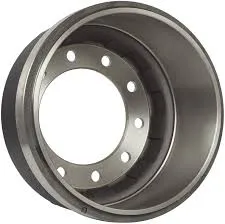
-
 Afrikaans
Afrikaans -
 Albanian
Albanian -
 Amharic
Amharic -
 Arabic
Arabic -
 Armenian
Armenian -
 Azerbaijani
Azerbaijani -
 Basque
Basque -
 Belarusian
Belarusian -
 Bengali
Bengali -
 Bosnian
Bosnian -
 Bulgarian
Bulgarian -
 Catalan
Catalan -
 Cebuano
Cebuano -
 Corsican
Corsican -
 Croatian
Croatian -
 Czech
Czech -
 Danish
Danish -
 Dutch
Dutch -
 English
English -
 Esperanto
Esperanto -
 Estonian
Estonian -
 Finnish
Finnish -
 French
French -
 Frisian
Frisian -
 Galician
Galician -
 Georgian
Georgian -
 German
German -
 Greek
Greek -
 Gujarati
Gujarati -
 Haitian Creole
Haitian Creole -
 hausa
hausa -
 hawaiian
hawaiian -
 Hebrew
Hebrew -
 Hindi
Hindi -
 Miao
Miao -
 Hungarian
Hungarian -
 Icelandic
Icelandic -
 igbo
igbo -
 Indonesian
Indonesian -
 irish
irish -
 Italian
Italian -
 Japanese
Japanese -
 Javanese
Javanese -
 Kannada
Kannada -
 kazakh
kazakh -
 Khmer
Khmer -
 Rwandese
Rwandese -
 Korean
Korean -
 Kurdish
Kurdish -
 Kyrgyz
Kyrgyz -
 Lao
Lao -
 Latin
Latin -
 Latvian
Latvian -
 Lithuanian
Lithuanian -
 Luxembourgish
Luxembourgish -
 Macedonian
Macedonian -
 Malgashi
Malgashi -
 Malay
Malay -
 Malayalam
Malayalam -
 Maltese
Maltese -
 Maori
Maori -
 Marathi
Marathi -
 Mongolian
Mongolian -
 Myanmar
Myanmar -
 Nepali
Nepali -
 Norwegian
Norwegian -
 Norwegian
Norwegian -
 Occitan
Occitan -
 Pashto
Pashto -
 Persian
Persian -
 Polish
Polish -
 Portuguese
Portuguese -
 Punjabi
Punjabi -
 Romanian
Romanian -
 Russian
Russian -
 Samoan
Samoan -
 Scottish Gaelic
Scottish Gaelic -
 Serbian
Serbian -
 Sesotho
Sesotho -
 Shona
Shona -
 Sindhi
Sindhi -
 Sinhala
Sinhala -
 Slovak
Slovak -
 Slovenian
Slovenian -
 Somali
Somali -
 Spanish
Spanish -
 Sundanese
Sundanese -
 Swahili
Swahili -
 Swedish
Swedish -
 Tagalog
Tagalog -
 Tajik
Tajik -
 Tamil
Tamil -
 Tatar
Tatar -
 Telugu
Telugu -
 Thai
Thai -
 Turkish
Turkish -
 Turkmen
Turkmen -
 Ukrainian
Ukrainian -
 Urdu
Urdu -
 Uighur
Uighur -
 Uzbek
Uzbek -
 Vietnamese
Vietnamese -
 Welsh
Welsh -
 Bantu
Bantu -
 Yiddish
Yiddish -
 Yoruba
Yoruba -
 Zulu
Zulu
drum brake system
Understanding the Drum Brake System An Essential Component of Modern Vehicles
The drum brake system is a fundamental component of vehicle braking technology, widely used in both light and heavy-duty vehicles. It consists of several key components that work together to provide reliable stopping power, ensuring the safety of vehicles on the road. This article delves into the function, advantages, and maintenance of drum brake systems.
Components of a Drum Brake System
A typical drum brake system comprises several critical parts the brake drum, brake shoes, wheel cylinder, and various springs and hardware. The brake drum is a cylindrical component attached to the wheel, made of cast iron or aluminum. Inside the drum are the brake shoes, which are lined with friction material. The wheel cylinder, located at the top of the drum, is activated by hydraulic pressure when the brake pedal is pressed, pushing the brake shoes outward against the inner surface of the drum.
Upon pressing the brake pedal, hydraulic fluid is transmitted from the master cylinder to the wheel cylinder, causing the piston to push the brake shoes against the drum. This friction gradually slows down the wheel, allowing the vehicle to come to a safe stop.
Advantages of Drum Brake Systems
Drum brakes offer several advantages over their disc brake counterparts. Firstly, they provide excellent stopping power, especially at lower speeds. The enclosed design of the drum protects the braking mechanism from debris and moisture, reducing the likelihood of performance degradation due to external elements.
Another benefit of drum brakes is their ability to generate more friction surface area compared to disc brakes. This characteristic allows them to handle heavier loads, making them particularly popular in trucks and buses. Additionally, drum brakes tend to be less expensive to manufacture and maintain, making them an economically viable option for many vehicle manufacturers.
drum brake system

Limitations of Drum Brake Systems
Despite their advantages, drum brake systems also have limitations. They can experience brake fade more quickly than disc brakes when subjected to prolonged use or heavy loads, leading to reduced braking efficiency. This is partly because they retain heat more than disc systems, which can dissipate heat more effectively.
Moreover, the complexity of drum brake systems can make them more challenging to service. The inner workings of drum brakes require disassembly for maintenance or replacement of worn parts, which can be time-consuming and labor-intensive.
Maintenance Tips for Drum Brake Systems
To ensure the longevity and reliable performance of drum brakes, regular maintenance is crucial. Vehicle owners should inspect brake shoes for wear, as the friction material can become thin over time. It’s also essential to check the brake drum for scoring or warping, which could indicate the need for replacement.
Cleaning the drum and brake components periodically can help prevent the buildup of dust and debris, which can impair braking performance. Additionally, ensuring that the hydraulic system is free of leaks and properly filled with brake fluid is vital for effective operation.
Conclusion
The drum brake system, while sometimes overshadowed by disc brakes, remains an integral part of automotive engineering. Understanding its components, advantages, and maintenance needs is essential for car enthusiasts and everyday drivers alike. With proper care, drum brakes can continue to provide reliable stopping power, ensuring a safe driving experience for everyone on the road.
-
What Are Drum BrakesNewsJul.07,2025
-
Understanding Brake Drum MaterialNewsJul.07,2025
-
Semi-Trailer Brake Drum: A Key Component for Extreme Loads and Long-Distance TransportNewsJul.07,2025
-
Drum Brake Pads for SaleNewsJul.07,2025
-
Brake Drums for SaleNewsJul.07,2025
-
Brake Drum ManufacturerNewsJul.07,2025
-
Aluminum Brake Drums: The Future of High-Performance CarsNewsJul.07,2025
